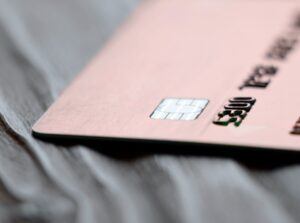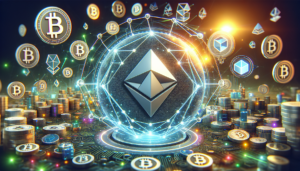Introduction to Selling NFTs
Selling Non-Fungible Tokens (NFTs) has become an increasingly popular way for artists, creators, and collectors to monetize their digital assets. NFTs are unique digital items that are verified on a blockchain, providing proof of ownership and authenticity. With the growing interest in NFTs, it’s essential to understand the process of selling them effectively. This guide will walk you through the key steps involved in selling NFTs, from setting up your digital wallet to marketing your creations and managing transactions.
What is an NFT?
An NFT is a type of cryptographic token that represents a unique digital asset. Unlike cryptocurrencies such as Bitcoin or Ethereum, which are fungible (interchangeable), each NFT is distinct and carries its own value. NFTs can represent various digital items, including artwork, music, videos, virtual real estate, and even tweets. They are stored on a blockchain, which provides a secure and transparent record of ownership and transactions.
Why Sell NFTs?
Selling NFTs offers several advantages for creators and collectors alike. For artists, NFTs provide a new way to monetize their digital creations and reach a global audience. They can set their own prices, receive royalties on future sales, and establish a direct connection with their fans. NFT market conditions have been favorable, with high demand and significant trading volumes, making it an attractive opportunity for sellers.
Setting Up to Sell NFTs
Before you can start selling NFTs, you need to set up the necessary tools and accounts. This involves choosing a digital wallet to store your NFTs and cryptocurrency, as well as selecting the right NFT marketplace to list your creations.
Choosing a Digital Wallet
A digital wallet is essential for storing, sending, and receiving NFTs and cryptocurrency. When choosing a wallet for selling NFTs, consider factors such as security, user-friendliness, and compatibility with the desired blockchain and marketplaces. Some popular options include MetaMask, Trust Wallet, and Coinbase Wallet. Make sure to follow best practices for wallet security, such as keeping your private keys safe and enabling two-factor authentication.
Selecting the Right NFT Marketplace
NFT marketplaces are platforms where you can list, buy, and sell NFTs. Each marketplace has its own features, fees, and audience, so it’s crucial to choose one that aligns with your goals and target buyers. Some well-known NFT marketplaces include OpenSea, Rarible, Nifty Gateway, and SuperRare. Consider factors such as the marketplace’s reputation, user base, supported blockchains, and listing fees when making your decision.
Creating and Minting Your NFT
Once you have your digital wallet and chosen marketplace set up, the next step is to create your digital asset and mint it as an NFT. This process involves preparing your artwork, music, or other digital content and converting it into a unique token on the blockchain.
Creating Your Digital Asset
The first step in creating an NFT is to prepare your digital asset. This could be a digital painting, a musical composition, a 3D model, or any other form of digital content. Ensure that your creation is original, high-quality, and in a supported file format (e.g., JPG, PNG, MP3, MP4). Consider factors such as resolution, file size, and metadata when preparing your asset.
Minting Your NFT
Minting is the process of turning your digital asset into an NFT on the blockchain. This typically involves uploading your file to the chosen NFT marketplace, providing a title, description, and other relevant metadata, and specifying the desired price or auction parameters. Minting NFTs usually requires paying a gas fee, which is a transaction fee on the blockchain network. Be mindful of the costs involved and ensure you have sufficient cryptocurrency in your wallet to cover the fees.
Listing Your NFT for Sale
After minting your NFT, the next step is to list it for sale on the marketplace. This involves deciding on the pricing model, setting the right price, and optimizing your listing for visibility and appeal.
Fixed-Price vs Auction Sales
When listing your NFT for sale, you can choose between two main pricing models: fixed-price and auction. With a fixed-price sale, you set a specific price for your NFT, and buyers can purchase it instantly at that price. In an auction, you set a starting price and a time limit, and buyers place bids until the auction ends, with the highest bidder winning the NFT. Consider factors such as the uniqueness and perceived value of your NFT when deciding on the pricing model.
Setting the Right Price
Determining the right price for your NFT can be challenging, as it depends on various factors such as the quality of your work, the demand for similar NFTs, and the overall market conditions. Research comparable NFTs in your niche and consider factors such as rarity, artistic merit, and potential resale value when setting your price. Be realistic and competitive, but also don’t undervalue your work.
Marketing Your NFT
Marketing is crucial for getting your NFT noticed and attracting potential buyers. Utilize social media, engage with the NFT community, and implement effective promotional strategies to increase the visibility and desirability of your NFTs.
Utilizing Social Media
Social media platforms such as Twitter, Instagram, and Discord are essential for promoting your NFTs and connecting with the NFT community. Share high-quality images or videos of your NFTs, provide engaging descriptions, and use relevant hashtags to reach a wider audience. Engage with other artists, collectors, and influencers in the NFT space to build relationships and gain exposure.
| Platform | Tips for Promotion |
|---|---|
| Use NFT-related hashtags, tag relevant accounts, participate in Twitter Spaces | |
| Post visually appealing content, use NFT-specific hashtags, collaborate with other creators | |
| Discord | Join NFT-focused servers, engage in discussions, share your work in designated channels |
Engaging with the NFT Community
Building relationships and engaging with the NFT community is essential for success as an NFT seller. Participate in online forums, join Discord servers dedicated to NFTs, and attend virtual or in-person NFT events to network with other creators, collectors, and enthusiasts. Collaborate with other artists, participate in community initiatives, and offer value to the community through your knowledge and expertise.
Managing Sales and Transactions
Once your NFT is listed and marketed, it’s important to manage the sales process and handle transactions effectively. This involves understanding royalties, monitoring your listings, and being responsive to potential buyers.
Understanding Royalties
One of the benefits of selling NFTs is the ability to earn royalties on future sales. When you mint an NFT, you can specify a royalty percentage that you will receive each time the NFT is resold on the secondary market. NFT royalties are automatically paid to the original creator, providing a passive income stream. Be aware of the royalty structures and fees associated with different marketplaces.
Handling Secondary Market Sales
After your NFT is sold, it can be resold by the buyer on the NFT secondary market. As the original creator, you will receive the specified royalty percentage each time the NFT is resold. Keep track of your NFTs on the secondary market, as their value may appreciate over time. Consider buying back your own NFTs if you believe in their long-term value or want to maintain control over your creations.
Ensuring Security and Avoiding Scams
The NFT market is not immune to scams and fraudulent activities. As a seller, it’s crucial to be aware of common scams and take measures to protect yourself and your buyers.
Common NFT Scams
Some common NFT scams to watch out for include:
- Fake marketplaces or websites that impersonate legitimate platforms
- Phishing attempts that try to steal your wallet information or private keys
- Counterfeit or plagiarized NFTs that infringe on intellectual property rights
- Pump-and-dump schemes that artificially inflate the price of NFTs
Best Practices for Security
To minimize the risk of falling victim to NFT scams, follow these best practices:
- Only use reputable and verified NFT marketplaces
- Keep your wallet information and private keys secure
- Verify the authenticity and ownership of NFTs before buying or selling
- Be cautious of unsolicited offers or too-good-to-be-true deals
- Do your own research and due diligence before making transactions
Conclusion
Selling NFTs can be a rewarding and lucrative venture for creators and collectors alike. By understanding the key steps involved, from setting up your digital wallet to marketing your creations and managing transactions, you can effectively navigate the NFT market and maximize your chances of success.
Recap of Key Steps
To summarize, the key steps to selling NFTs are:
1. Setting up a digital wallet and choosing an NFT marketplace
2. Creating and minting your digital asset as an NFT
3. Listing your NFT for sale with the right pricing model and price
4. Marketing your NFT through social media and community engagement
5. Managing sales, transactions, and royalties
6. Ensuring security and avoiding common NFT scams
Final Tips for Success
As you embark on your NFT selling journey, keep these final tips in mind:
- Focus on creating high-quality and unique digital assets
- Stay up-to-date with the latest trends and market conditions
- Build a strong online presence and engage with the NFT community
- Be patient and persistent, as success in the NFT market may take time
- Continuously learn and adapt to new technologies and opportunities
By following this step-by-step guide and implementing the strategies discussed, you’ll be well-equipped to successfully sell your NFTs and make your mark in the exciting world of non-fungible tokens.
See also:






